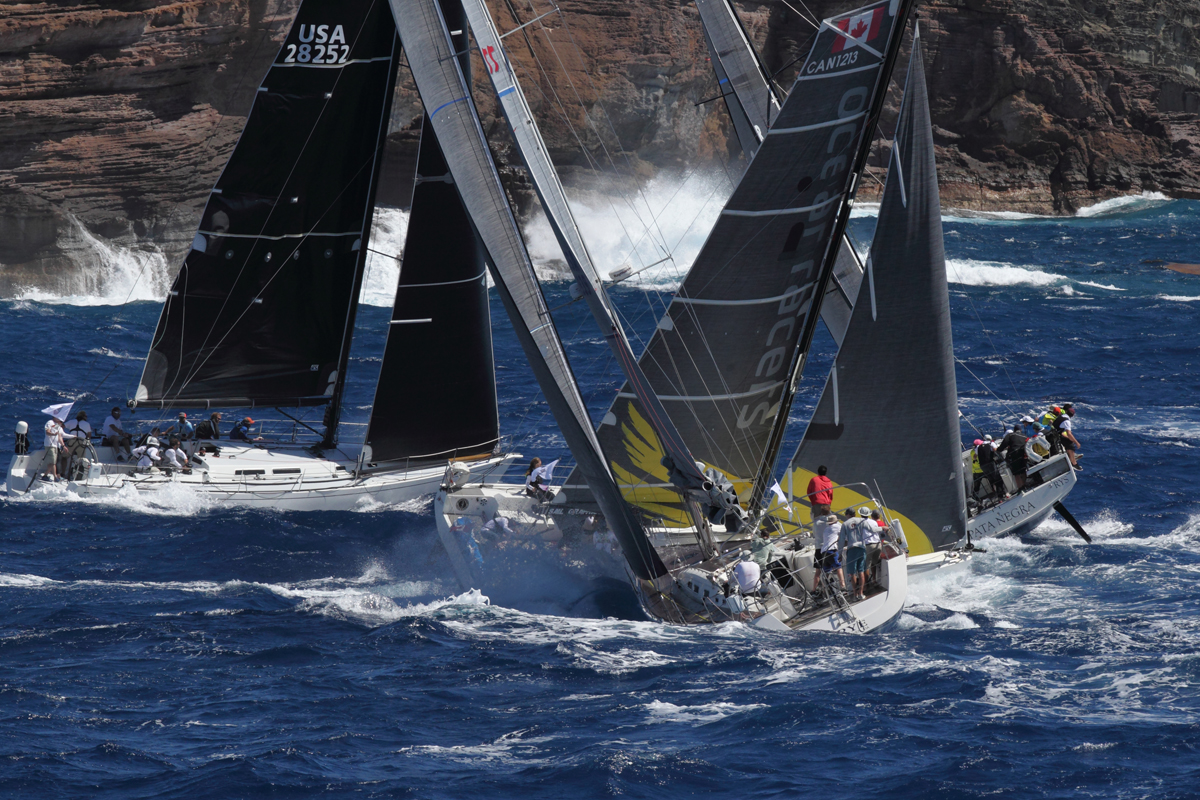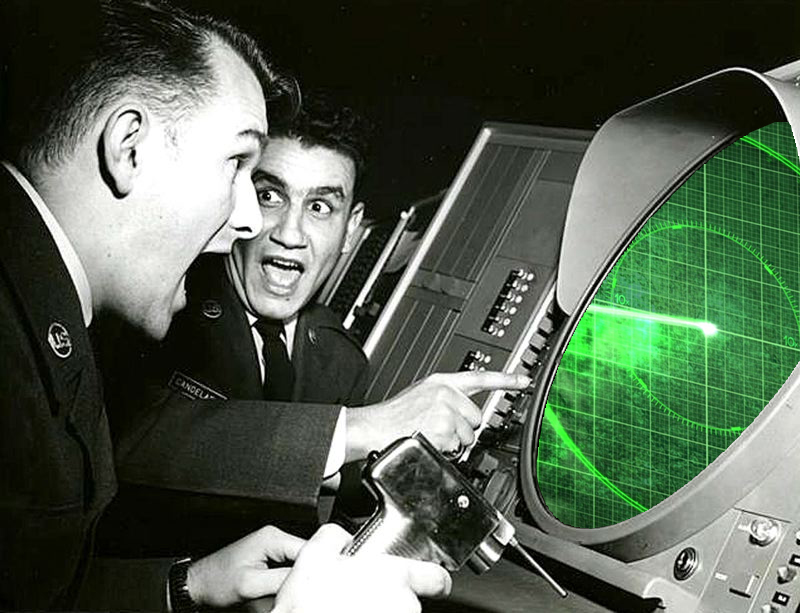Ensign Padin?
BY Buttons Padin
While in the Navy, we junior officers of the deck would monitor approaching ships by tracking their position on the surface search radar screen with a progression of grease pencil dots on the screen. We were always the center of the screen, so all the tracking was relative to our course and speed. We would then use a tongue depressor as a straight edge (yeah, pretty fancy tools in those days) to connect the dots and determine if the contact would pass ahead or behind us…and its CPA (closest point of approach). If the CPA was less than one mile, our standing orders were to wake the Captain at any hour of the day. Crossing situations with ships at sea can be messy if not anticipated properly. In sailboat racing, however, you rarely have the luxury of tracking an approaching contact in such a disciplined manner.
Think Trees!
Here is a series of images from the start of the Caribbean 600 where quickly and accurately tracking relative positions was critical. The Pogo 12.5 HERMES, on port tack, encountered two starboard tackers just off the cliffs near the port end of the starting line. HERMES managed to thread the needle and make it through rather than having to tack back toward the cliffs. But how did she know she would make it? How could she be sure she wouldn’t get tagged with a foul at the start of a 600-mile race?
Note the tactician moving to where he can see the crossing situation clearly.
HERMES did not have some young Ensign below glued to a surface search radar scope in this crowded part of the race. Instead, if you look carefully, you can see her tactician watching from the stern during the whole crossing situation making sure they were crossing cleanly. When racing inshore, the best way to figure out a crossing situation is to watch what happens to the shoreline in relation to the other boat’s headstay. If that boat is moving forward against the shoreline, she is crossing you. If the other boat’s headstay is moving backwards on the shoreline, you are crossing. If the shoreline is not moving, and you are the port tacker, it is time change course; either tack or ease sheets and duck.
Watching the shore line is called “Making Trees” because you are either making them or losing them. If you are racing along a city front, you can be making buildings. Your crew can have some fun. Sometimes when the bearing is changing slowly, I tell the helmsman, we are making leaves – instead of whole trees. The speed at which the horizon appears or disappears is an indicator of how much relative gain you’re making (or losing)…your CPA.
The second option is when there isn’t a shoreline behind you. In this situation you can use a hand-bearing compass. If you are on port tack and the bearing numbers on the other boat are increasing, you are crossing. If the degree readings are getting smaller, you are falling behind. If you don’t have a hand-bearing compass, use something fixed on your own boat as the fixed position against which to judge the relative movement of the other boat. You can use the leech of the jib or a station to leeward or a fixed fitting on your boat as the base. Remember, if your boat changes course, you’ll have to start free on checking the bearing against that part of the boat.
OK, you’ve determined your relative position is moving ahead on the other boat, but what is the CPA? This is the tough part of the equation. If you’re only gaining trees slowly, chances are you may not have enough of a lead to get your stern past her bow. If you’re not making any trees at all and the range is closing (what we called SBDR in the Navy–steady bearing, decreasing range), make sure the folks on the rail are ready to tack.



Very good detailed explanation for sailors new to the sport.
Very good detailed explanation for sailors new to the sport.
I have to add that of the position of the ”Navigator” should be constant not changing position while taking the sights.
I have to add that of the position of the ”Navigator” should be constant not changing position while taking the sights.